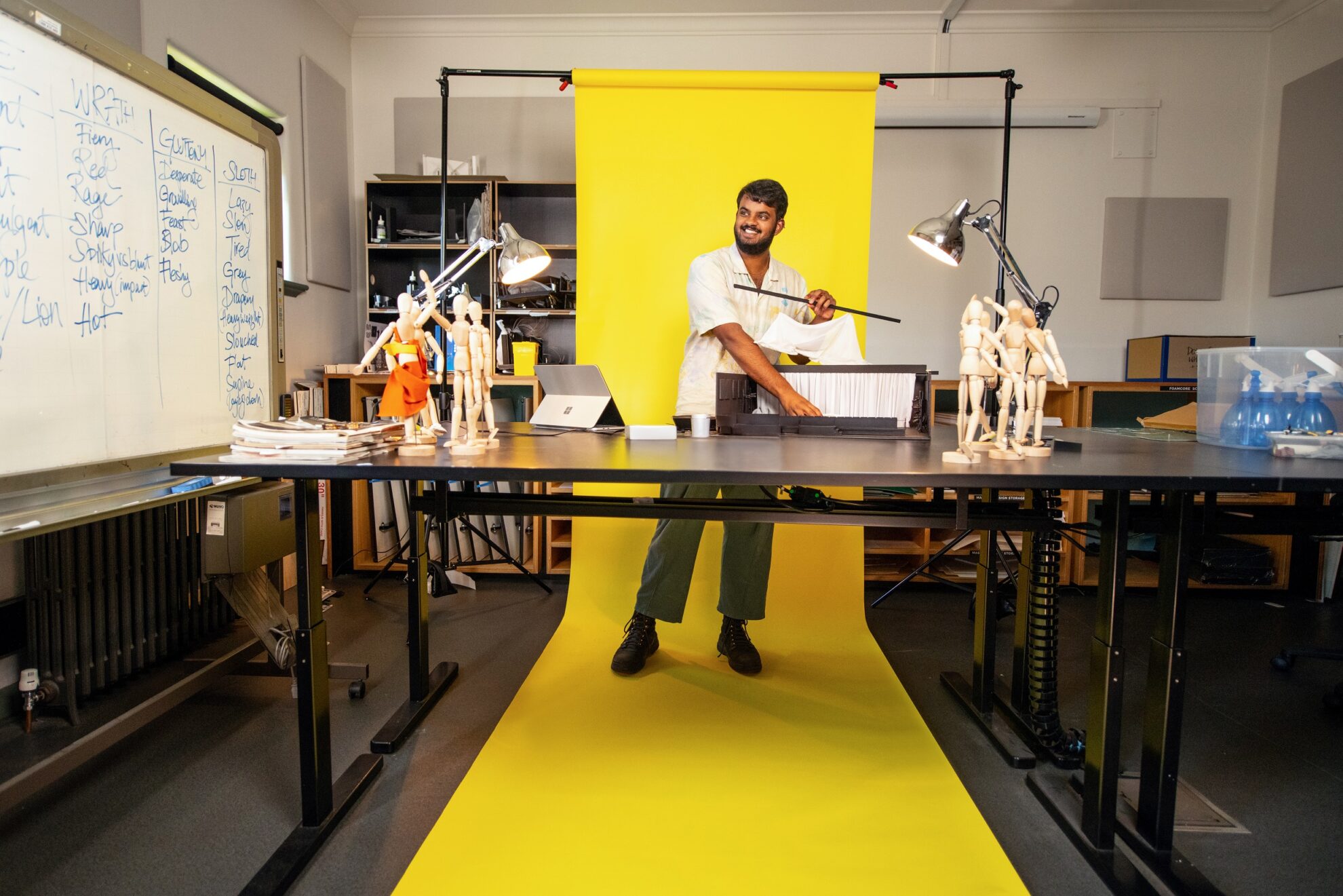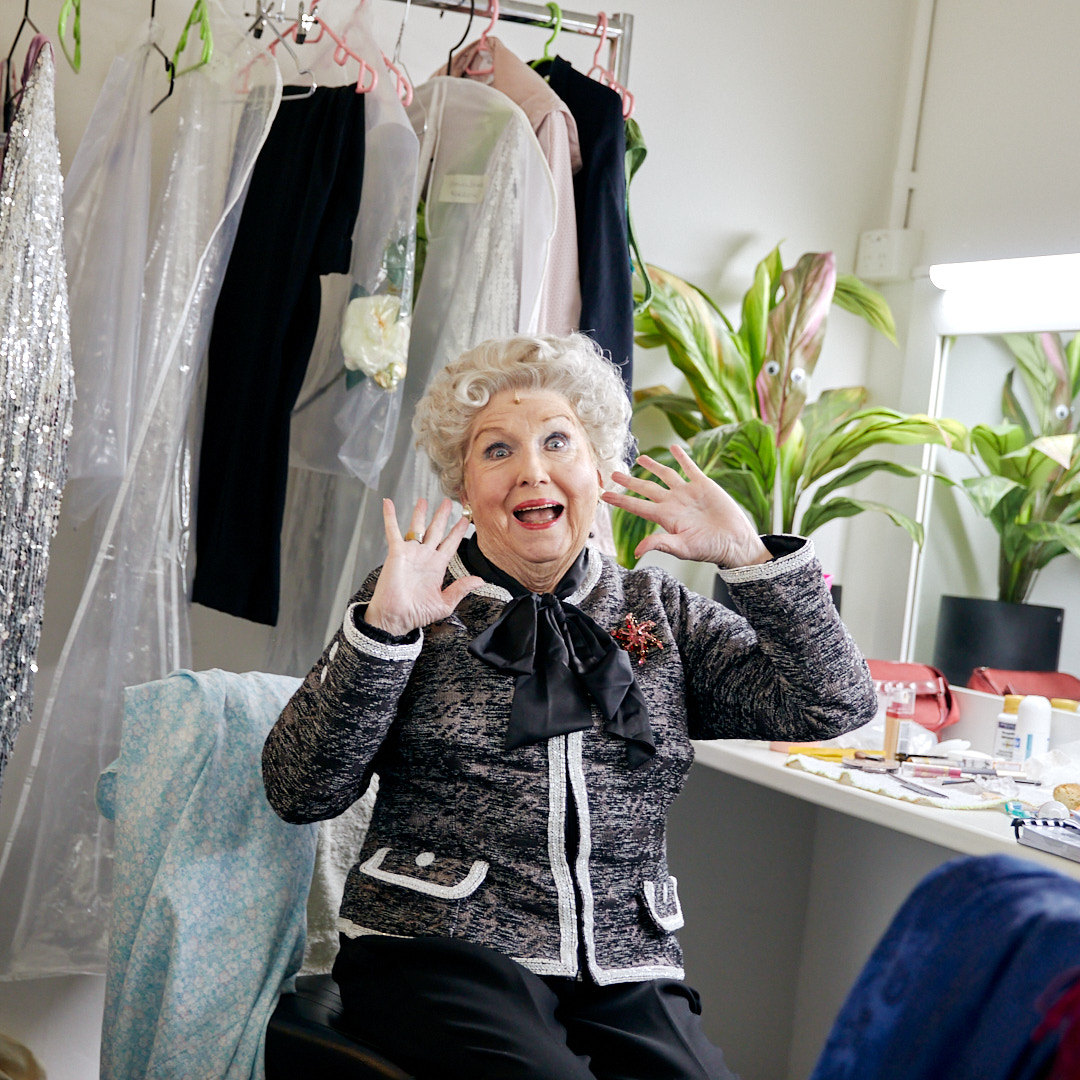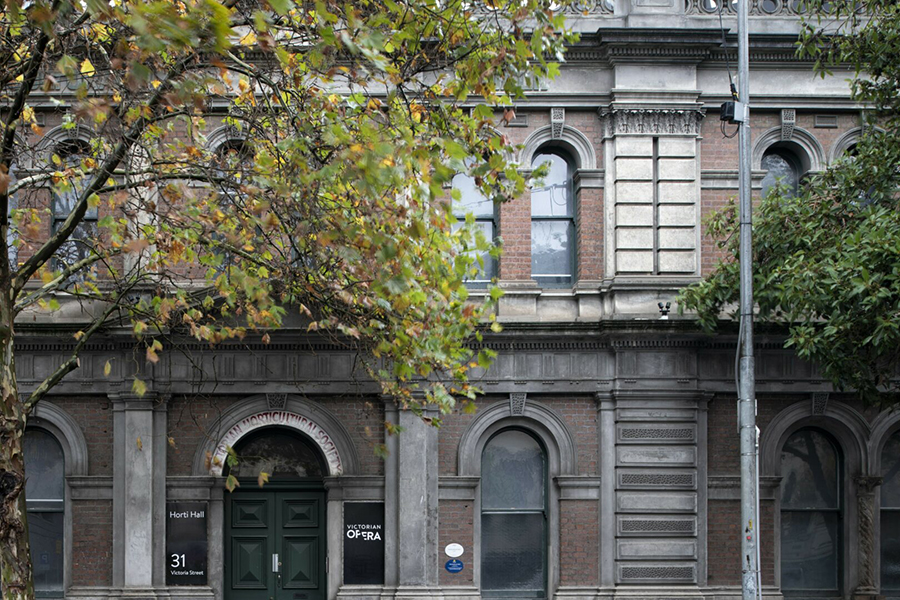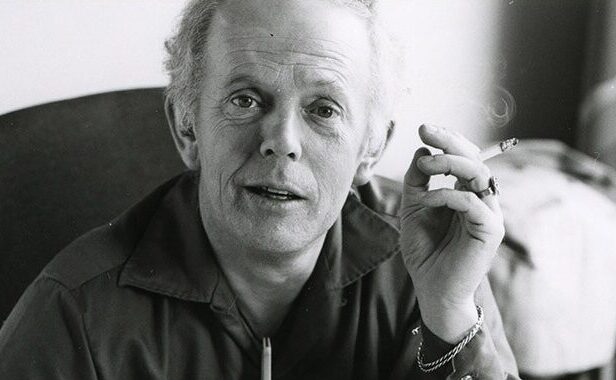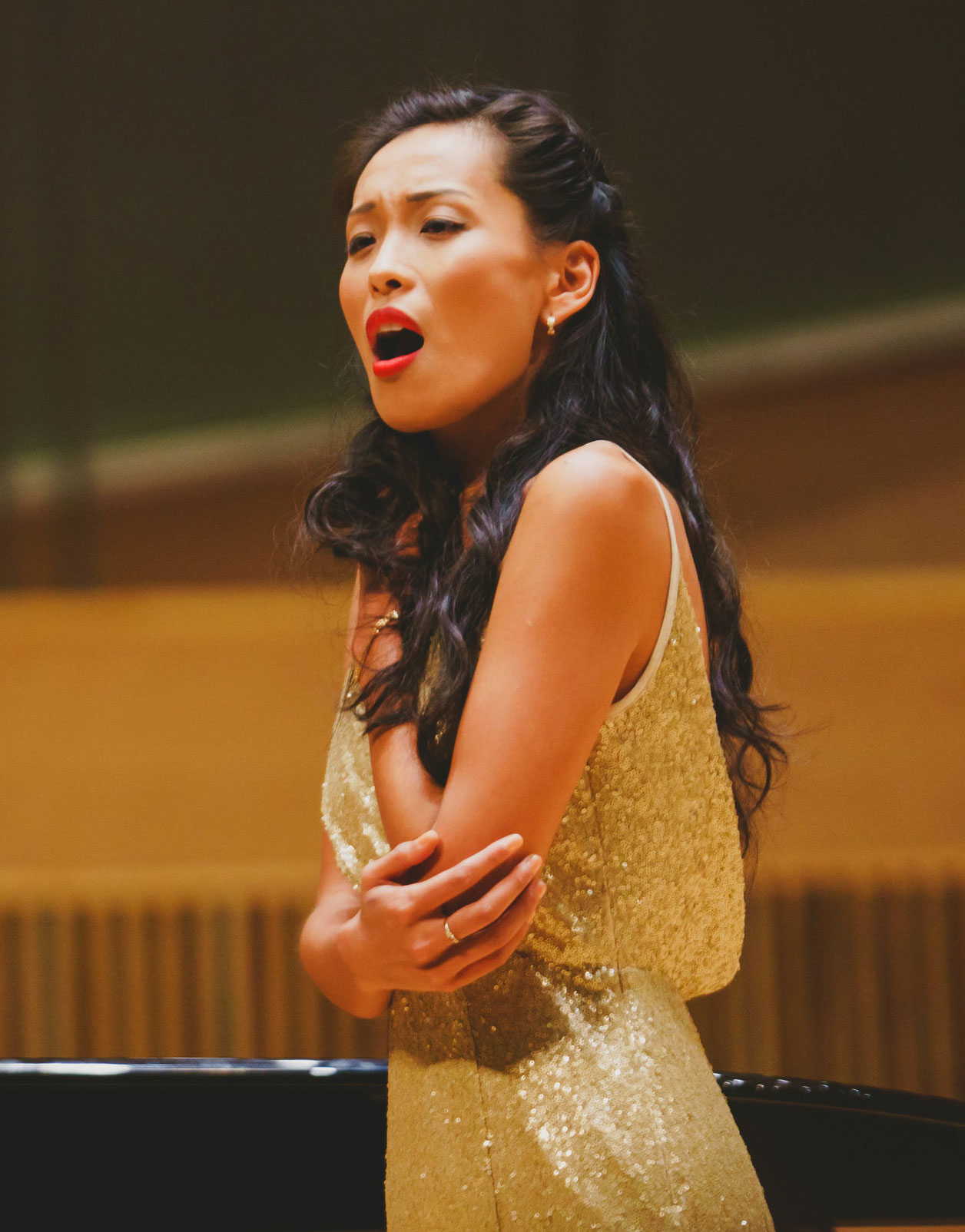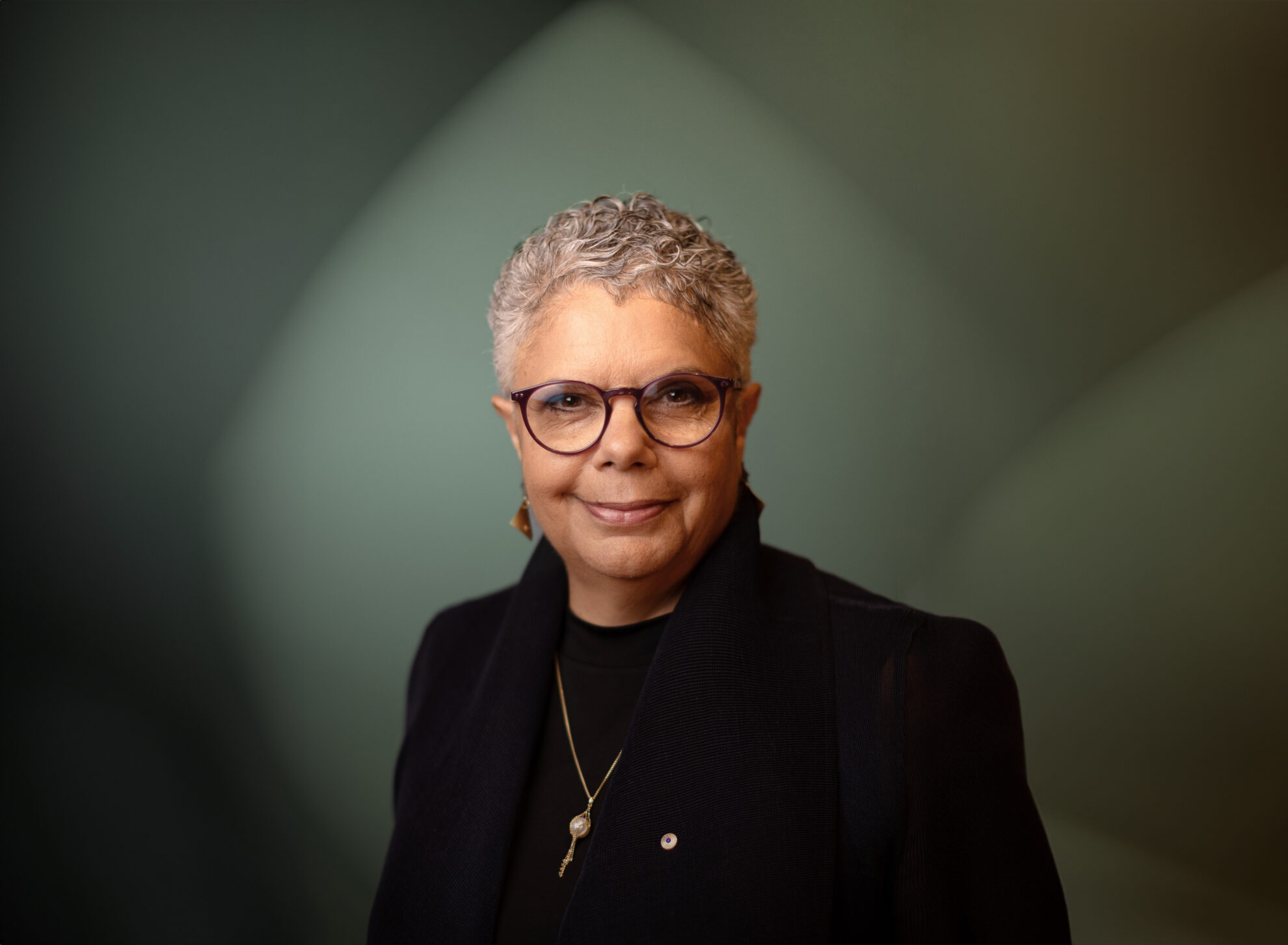
Interview with Deborah Cheetham Fraillon AO
Acclaimed Yorta Yorta soprano and composer Deborah Cheetham Fraillon AO speaks about ‘Parrwang Lifts the Sky’.
What significance does this story hold for First Nations people and more specifically, Wadawurrung people?
I think the story of the very first morning is essentially a story of Enlightenment. This idea is embedded in all cultures across the world. The moment when our first morning began, the moment where our story begins, is the moment when Enlightenment begins. I say begins because Enlightenment is all about coming to understand something fully and to know it in a really practical and experiential way and I think all cultures can celebrate those moments. For First Nations cultures in Australia, there really has been no permanent disconnection from the celebration of this creation story. Our histories, lore and knowledge have been passed on continuously for something like two thousand generations. Now it’s sometimes difficult to get your head around two thousand generations, nevertheless, this knowledge has been passed on here, on this continent longer than knowledge has been passed on anywhere in the world, and you know the best part about it? It has been passed on through music. Our way of knowing the world and giving meaning to everything it has been through the arts and in particular – song. Can you imagine anything more deserving of an opera than a creation story that is linked so inextricably to song? The song of a bird, the song of Parrwang, the magpie. I’m surprised no one had thought to write an opera about this story before. So I’m very glad that I have the opportunity to create this work.
It’s about the beginnings of life, of understanding and the beginning of song on this continent.
How far back does this story date?
This is a story that comes from the beginning of time. Each culture in the world has their own perception of the beginning of time and some religions in the world have a perception of the beginning of time. Think about Christianity for instance, which is roughly seven thousand years old, so relatively new in the scheme of things, but right at the very beginning, the Genesis of that story is a creation moment. For First Nations people creation began in what is commonly known as the Dreamtime.
How important is storytelling for First Nations communities and how important is it that they’re told to all children and young people of today?
Well, in these stories are our histories, our body of knowledge, so they are very important, vital actually. The Wadawurrung people and their leadership have demonstrated great generosity by sharing this story. They realise that it is so important that all the cultural knowledges, histories and stories are passed on to all children.
In this opera we have the opportunity to sing a beautiful story. That’s a very traditional practise. All our stories in our knowledge have always been sung. Singing and dancing are so important to culture and visual arts. What is opera? It’s all of those things. So, in a sense, opera has existed since the very beginning of time as well.
In your mind, is there a connection between the history of oral tradition and opera?
First Nations people have a very strong oral tradition. We have always sung our knowledge and that knowledge on from generation to generation in song. Our histories and knowledges are not only sung, they’re also danced, and painted. Music, dance, costume, ceremony – that’s the very definition of opera for me. Of course, the contribution to opera since the Italians first came together and created this style of opera we know today, and that was some three hundred years ago, that has brought lots of different technical aspects that an opera singer like me just needs to study and learn before they can actually embark on a career in opera. A director like Cameron will need to study opera in depth to understand how to direct it. A conductor like Richard Mills will need to study for many years in order to conduct. The players in the orchestra and the singers and so on. But the point of this is that opera really stems out of that tradition of ceremony that First Nations people have been enacting for more than two thousand generations. So, there is a very strong connection between the lived culture of First Nations people and the ceremony of First Nations people, and the art form that we call opera.
What themes do you explore in this work?
Essentially, Parrwang Lifts the Sky is about understanding your connection to nature and your place within nature. Only by understanding your connection and your place within nature can you live at one with nature. Probably the biggest challenge facing humanity today and into the future is the challenge of how we continue to live on this planet, and to use its resources in a sustainable and responsible manner. What Parrwang Lifts the Sky is really all about, is the relationship between humans and the rest of nature. An understanding that we are part of something rather than the masters of our universe and that living in harmony with nature doesn’t decrease our enjoyment or lessen our experience or our importance in our own worlds. In fact, it feeds into it. All the knowledge that Tjatja and Koki have, particularly Koki with his real love of Latin names of things and his study of the environment and the world that he’s never seen, all of these things are added to an enlightened Koki because all of the knowledge that he’s accumulated is important. He doesn’t abandon that knowledge, but knowledge without experience can never become wisdom. That is where the traditional stories and histories and knowledge lead us towards wisdom.
You’ve written the libretto as well as the music for this opera. Can you explain the process for each of those?
I love writing my own lyrics and when you are putting lyrics together in an opera it’s called a libretto. Libretto is an Italian word. Now you’re going to find that a lot of words associated with opera, including the word opera, come from Italy. Why is that? Well, even though the kind of performance that opera is has existed since the Wadawurrung had their very first morning, opera got this really great shake up about three hundred or so years ago and that happened in Italy, in a little place called Florence. A group of friends who were all composers came together to form the Florentine camerata. They wanted to write a kind of dramatic style of sung performance – different to anything they could hear anywhere else. A lot of music was being performed in churches during that time, but you weren’t allowed to do any acting, it was all just about the music. These Italians three hundred years ago decided to invent opera as we know it today. They got together their friends into little chamber orchestras, just like the one that we’ll have, and they started to write stories and put together an orchestra and singers. Then they realised that the singers needed to be able to be heard over the orchestra, so they developed a kind of singing technique called bel canto..
My process with this opera was first to consult with the Wadawurrung people. Their lands run from Ballarat, right down to the Bellarine Peninsula. This is their story. This story is important to them and it’s going to become important to us as we learn all about it through this opera. The great clan of Wadawurrung have known this story for two thousand generations. So, first of all, I had to get permission to tell this story in an operatic way. Once I had that permission from senior custodian Corrina Eccles and her family, I could then start to build a little bit more into the characters of each of the birds so that we could get to know them. Parrwang, the magpie from Wadawurrung and Gorngany, the role I’ll sing, which is the magpie from Yorta Yorta country.
Research is very important when you’re going to write a story. I had to research all kinds of things including the types of eucalyptus trees that you would expect to find on country. The gum trees are very different in different parts of the country, but one interesting fact that I discovered in my research, and, was that the River red gum, which is so important to Yorta Yorta people which is my country, Yorta Yorta country up there at Barmah Forest and on the Dhungala River or the Murray as you might know it. The River red gum made its way all the way down to Wadawurrung country and so the tree that Parrwang lives in could well have been a River red gum and so that’s the way that I went for this story. So, research is important. Gaining permission is important. Accepting that there may be some knowledge that you are not entitled to know. Why might that be? Well, if you haven’t had enough training in a certain body of knowledge, you might not be ready to understand certain parts of a story. So, the choice is yours. Do you gain access to that knowledge by spending the time acquiring it, or do you just accept that some knowledge is not yours to know? In the question of this opera, I made sure that each part of the story that I was telling was ready to be shared broadly with all Australians and that gave me a certain confidence in writing my libretto.
Also, I wanted to make the story in the libretto timeless. We meet Koki and we meet Tjatja. They are young people, probably the same age as you are or may be a little older or a little younger. I wanted to make those two characters representatives of where Australia is right now, a country that has so much knowledge accumulated of the world that it exists in. A very clever, a very smart nation in so many ways, but one which has not acquired, really, very much knowledge of Indigenous cultures and is just beginning to. It’s a very exciting time actually. A very exciting time for Australians. The generation of students who are reading the answers to these questions are the people that will carry those knowledges forward. I was really pleased to be able to bring so many parts of the Wadawurrung story into this opera so that it could be shared so that people could start to gain confidence to ask more questions and to spend more time learning about Wadawurrung culture.
Can you also speak to your process behind composing the music?
I start with the lyrics. I start with the libretto because as I’m writing the story, the rhythmic quality of the words that I’m using start to generate ideas in my mind. I would usually have a little bit longer for a project like this, but I’m very excited that it’s happening this year because I think we need something really uplifting after the 2020 that we’ve just had and Parrwang Lifts the Sky is quite literally, an uplifting story.
So, I start with the words and that generates the rhythmic content and then the melodies and the harmonies start to form. Once the libretto is complete, then I’ll begin to write. I won’t always start at the beginning and work my way through to the end. Sometimes I’ll just start with the most present idea and the strongest voice. For me, that was the voice of Parrwang, obviously, the character that the opera is named for. Then I’ll start to layer. Something in composition that’s a really important tool to look at is voice leading. How does one note lead into the next note and the next? This is very important for all instruments, but especially for singers. I will look at a kind of a horizontal approach if you like – that doesn’t mean I was lying down while I wrote this – it means that I looked at the melody line and then start to layer that melody line so that we create the harmonic texture and the harmonic rhythm underneath the melody lines. With me it starts with the words, the rhythm, the melody, the harmonies.
Occasionally, I’ll abandon that altogether and I’ll sit at the piano and I will extemporise. Now extemporise is like improvising, but it’s like pouring your subconscious onto the keyboard. From there I’ll develop the harmonic language that I want to use, and I bring those two parts of my compositional process together and put into a software that I use that’s called Sibelius. There are lots of different software’s out there, this is just the one that I happen to use. That’s a very useful software, because with the right sound card you can approximate what your instruments are going to sound like when they play your music, and it can help refine your compositional process. I do that all the time. Not being as clever as a Beethoven or a Mozart or a Lili Boulanger or a Clara Schumann where I can just take those melodies out of my head and put them straight on the page, I use some software to help me along that way and I think most composers do these days. Having the right tools around you is important. I’ll sit at the piano for hours once I have a melodic idea and I’ll refine that idea and I’ll expand on that idea.
What should students listen out in this work?
In Parrwang Lifts The Sky you will hear themes that sometimes represent a character or characters’ mood or something that the character is doing, and you’ll find that they recur throughout the opera. These themes are threads that weave the entire opera together, in one fifty-minute act. If you listen carefully you will find that these themes or motives serve to remind you of what a character might have said or done. Now, different composers call these themes different things. In the German school of composition, they’re called leitmotifs, and these can be very, very intricate. They can be incredibly complex and can be treated in a myriad of ways. I think of the composer Richard Wagner when I think of leitmotifs. I’ve used this in a fairly nuanced fashion and you’ll find little moments, for instance, the theme that introduces us to Mr Waa helps to project his character. Mr Waa is a very important crow so his theme needed to project the way a very important crow would. In this story Mr. Waa is on his way to a very important meeting – the very Great Council of Birds – and his very important role in the Council of Birds. So, he’s very proud and so I’ve tried to capture the character of that and the mood of that character in his theme which is introduced by the Cor Anglais. So, you can listen for themes that recur throughout. You can listen for different styles of music, some more lyrical and melodic, some more dramatic. As well as solo songs, which in opera we call arias, you’ll also hear a number of different ensembles, sometimes duets, sometimes trios, sometimes for the entire cast coming together to celebrate the story.
This brings me to the point of what opera can do that no other form of music or art can do, not as well as opera at least. You can have seven different people on stage singing seven different ideas, and they can work harmoniously together. That’s what opera can do. In that way, opera is a beautifully nuanced art form. You can have lots of layers of meaning going on all at the same time, and it will all make sense. That is, of course, if the composer has done their job, it will all make sense. Listen closely to the chorale towards the end of the work when all seven characters are sharing their feelings.
What instruments have you chosen for the orchestra and why?
Our orchestra on this occasion is made up of a five families of instruments. Of course, this is an opera all about birds, so there are woodwind instruments, as they are the most likely to be able to replicate bird life and bird sounds. We have flute and piccolo, clarinet, bass clarinet, oboe and bassoon are augmented by lower version of the oboe, the cor anglais. Then we have the French Horn which is an instrument that is sort of halfway in between woodwind and brass in its sound. Added to the woodwind and the French horn, we also have the strings, and this will be a string quintet. That is first and second violin, viola, cello, and lowest of the classical strings, the double bass. Finally percussion completes the ensemble with timpani, cymbals, triangle and glockenspiel.
We’re so lucky to have the talents of many fabulous musicians to draw upon in Melbourne. Members of Orchestra Victoria and Ensemble Dutala (Australia’s First Nations Orchestra) are joined by freelance artists to complete a compact chamber ensemble for the production. I love composing music for friends from the Melbourne music community and recommend it as a wonderful process. If ever you ever decide to write your own opera, write for people you know. Harness their expertise and do the same for your singers. Understand each artist’s strengths and your story will strengthen through you collaboration. That’s what opera is all about, collaboration. Collaboration of the arts, singers, musicians, set and costume design with story at the centre.
This little ensemble is what we call a chamber music. Anything that’s between two and about sixteen is considered to be chamber music. Why chamber? Well, chambers were smaller spaces, so not big concert halls. Now in Melbourne, we’ve got some fantastic theatres and concert hall spaces. Some can accommodate more than two thousand people. For Parrwang Lifts the Sky we have chosen the Playhouse Theatre which is perfectly suited to our Chamber opera. Seven soloists, a chorus of seven children, and twelve instrumentalist will come together to present Parrwang Lifts the Sky. Not only present but premiere this opera. This is the premiere season of Parrwang Lifts the Sky.
The Parrwang Lifts the Sky will be presented at the Merlyn Theatre, Malthouse, from 10 – 18 May.
